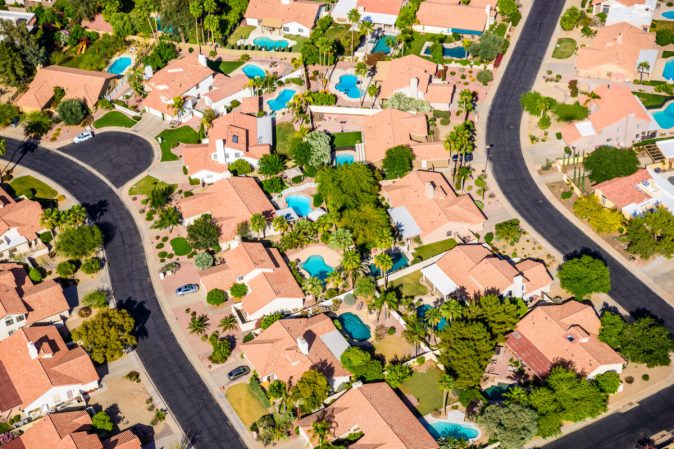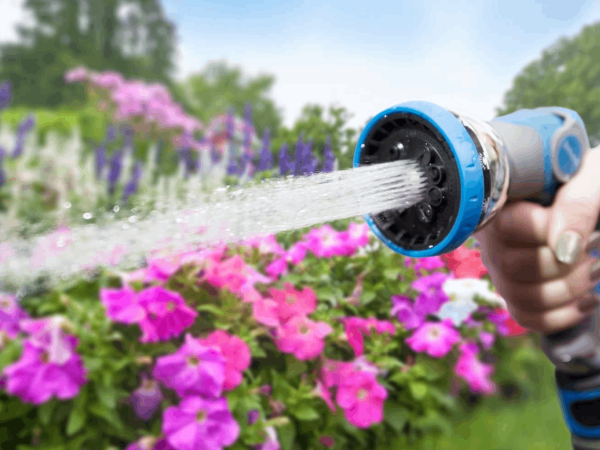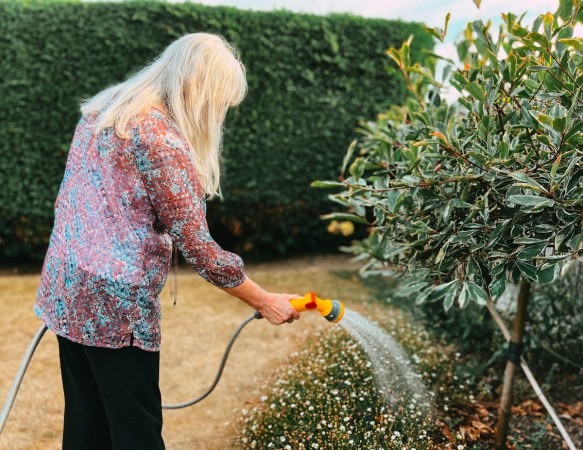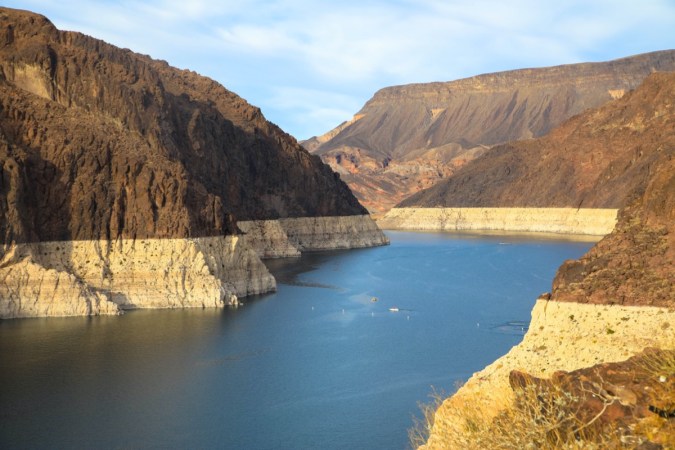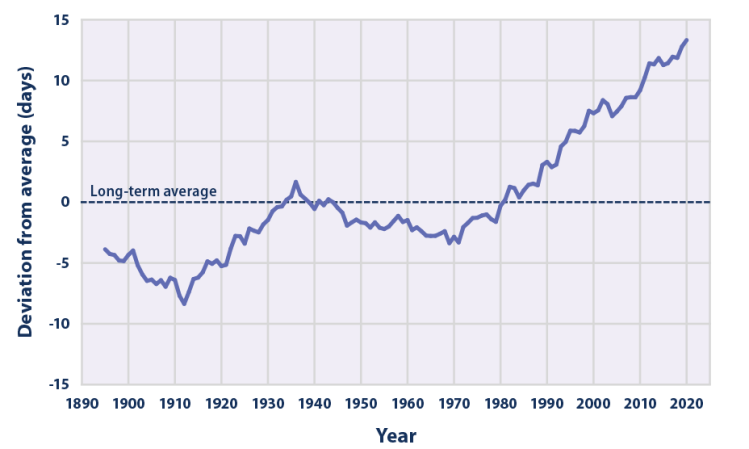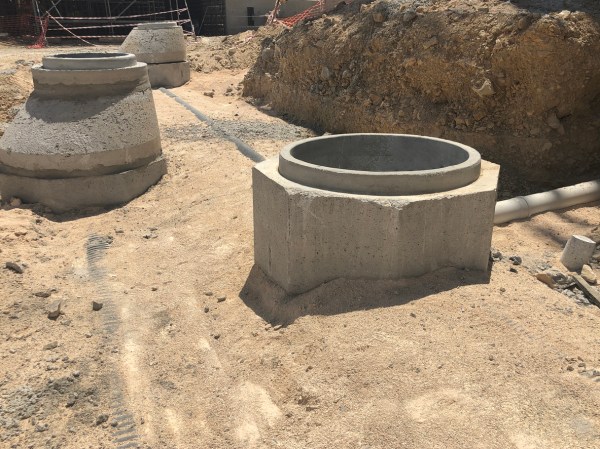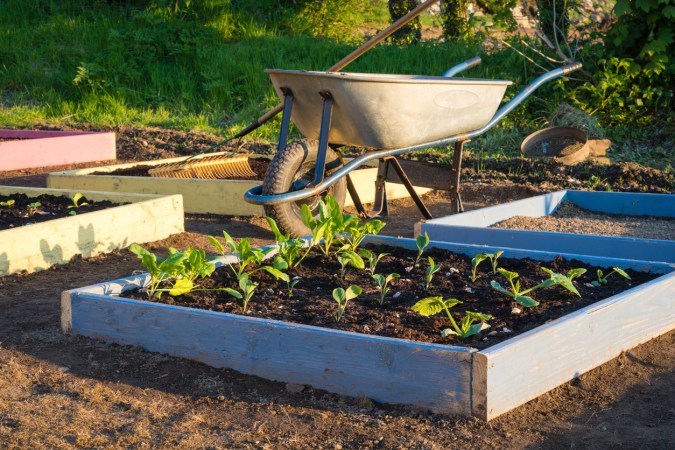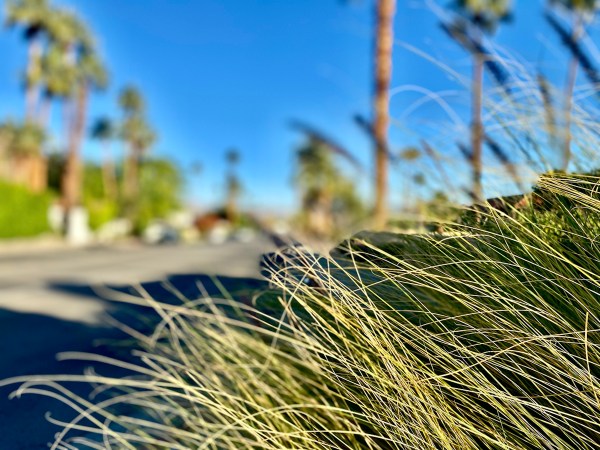We may earn revenue from the products available on this page and participate in affiliate programs. Learn More ›
As wildfires rage, droughts persist, and heat waves impact much of the country, water restrictions are becoming more common. The extreme drought currently affecting the southwestern United States continues to impact communities far and wide.
Texas is feeling the brunt of it, with drought conditions impacting the entire state for several weeks now. That means nearly 23 million people are dealing with one of the driest periods in over 120 years in the state. Critical water sources throughout Texas, such as lakes, rivers, and watersheds that feed underground aquifers, are not being adequately replenished. Austin, for example, recently had more than two weeks of triple-digit temperatures and no rainfall. That led to authorities putting water restrictions into place, with more possibly coming.
RELATED: 12 Things to Help You Conserve Water at Home
States Enacting Water Restrictions
In addition to Texas, water restrictions have been announced in California, Arizona, Colorado, Nevada, New Mexico, Utah, and Wyoming. At the end of April, the Metropolitan Water District of Southern California declared a water shortage emergency, requiring millions of people to cut their outdoor watering to one day a week. A county in Colorado issued Stage 1 water restrictions for the first time in 20 years to control which days people can water their lawns and gardens. In Utah, legislators recently passed one of the country’s first statewide grass rebate programs to help eliminate non-functional grass from landscapes.
In Nevada, the Southern Nevada Water Authority banned watering between 11 a.m. and 7 p.m. Monday through Saturday or at any time on Sundays through August. In addition, the ongoing drought has led Las Vegas to cap the size of new swimming pools at single-family residential homes to 600 square feet of surface area. With 23,000 gallons of water evaporating from the average size swimming pool, it is estimated that this new restriction will save 3.2 million gallons of water in the first year and up to 32 million gallons by 2032.
In Arizona, cities like Phoenix, Tempe, Mesa, and Scottsdale issued water alerts to encourage residents to voluntarily reduce their water usage. For now, they are focusing on educational campaigns before turning to mandated water restrictions.

Other Parts of the Country Limiting Water Use
While the persistent drought in the Southwest has gotten a great deal of attention, other areas are also experiencing similar issues. Seven counties so far in New Jersey are under an alternating watering schedule for lawns and gardens to address water demand during heat wave conditions. The odd/even watering plan helps residents maintain their landscaping while also conserving water and saving some money on water bills.
Over 50 communities in New Hampshire have outdoor water restrictions due to the drought the state is experiencing this summer. According to the U.S. Drought Monitor, the whole state plus more than half of Maine is under either a “moderate drought” or “significant drought.”
RELATED: The Best Water Saving Shower Heads
Penalties for Non-Compliance
The types of penalties on the books and whether they are actually enforced depends on the specific location. For the new pool size restrictions in Las Vegas, the penalty for building a pool bigger than allowed will be denial of water service. For residents in Northern Douglas County, Colorado, authorities say they are boosting monitoring and enforcement of the rules. Rates may go up for those who use more water than allotted. In Corpus Christi, Texas, residents who violate the water restrictions in place will face a $500 fine. City officials also stated that they will no longer provide warnings; instead, violators will be issued citations to encourage everyone in the community to do their part to address the critical water crisis in the area. Finally, in Glendale, California, customers who do not comply with water conservation ordinances will receive a violation warning notice, and repeat violators may face a fine of up to $1,000.

Success Stories
Each city, county, and state is doing what it can to help minimize the impacts of the drought. Success depends on a number of factors, such as weather, compliance, enforcement, and community buy-in. Glendale, California, is an example of a success story when it comes to water restrictions to help manage the drought. Water use in Glendale was down by almost 12 percent this June, compared to last year at the same time. And it was 25 percent lower than a decade ago. Most water usage was from landscaping. Since moving to mandatory conservation in August 2020, Glendale’s residents and businesses have saved about 500 million gallons of water.
RELATED: 5 Things to Know About Low-Flow Faucets and Fixtures
Tips for Conserving Water Around the House and Garden
Whether water restrictions are in your area yet or not, it is important to be mindful of your household’s water use and take some steps to help conserve when possible. Consider the following tips:

- Water yards early in the day or at night to reduce evaporation.
- Choose drought-tolerant and/or native plants, shrubs, trees, and grasses.
- Use mulch under trees and plants to help retain moisture.
- Check and maintain your irrigation system to ensure that water is being applied when, where, and in the amount most needed.
- Install a smart irrigation controller.
- Consider a drip irrigation system.
- Use a rain barrel to collect water for landscape use.
- Repair leaky faucets and toilets to reduce indoor water use.
- Choose sustainable products that carry the Environmental Protection Agency’s WaterSense label.


